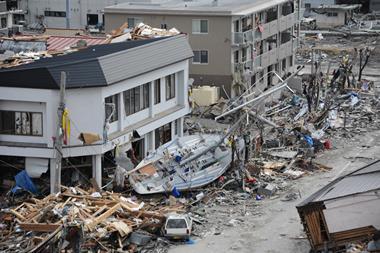With catastrophic occurrences seemingly on the rise, it’s important that risk managers understand such scenarios and the cover they require
F loods in Queensland, a major earthquake in Christchurch and the Japanese earthquake and tsunami have meant a tumultuous start to 2011, testing the fortitude of affected populations and businesses, from mining operations in Queensland to nuclear facilities in north-eastern Japan. They have underlined the importance of having the right protection in place and put business continuity plans to the test.
Managing catastrophe risk is one of the biggest challenges facing many multinational organisations. Identifying the safest location for your business is fraught with uncertainty, while inferior construction and unreliable infrastructure can increase vulnerabilities. Catastrophe risk financing is one way of protecting multinational firms against major losses following a catastrophe.
Even if a business is lucky enough to escape the worst catastrophes, in today’s globalised world it can be indirectly impacted, explains Invensys vice-president of risk Chris McGloin. “What organisations like Invensys have got to do is understand where their risks are: not just how your own locations can be disrupted, but the supply chain and the extent of the supply chain.”
He cites the 2010 eruptions of Iceland’s Eyjafjallajökull volcano, which grounded flights across much of Europe, and the Queensland floods, which triggered a drop in the global coal supply, as events which disrupted the flow of goods. “Threats to supply lines are always a concern because we do rely on things being done efficiently and smoothly.”
Learning lessons
In the Bowen Basin – home to Queensland’s coal mining industry – several operators declared ‘force majeure’ on their mining contracts, relieving them of their obligation to deliver to customers. Up to 50 of the state’s 57 mines were affected. While many were back up and running shortly after the floods, flooded pits and damage to key infrastructure and ports delayed recovery times for others, bringing exports to a halt.
Floods, wildfires and tropical storms are not unusual in Australia. Neither are earthquakes in New Zealand and Japan. What has come as something of a surprise is the aggregation of these events – each of them significant insurance events – affecting highly populated and industrialised areas.
The size of Japan’s magnitude 9 quake and resulting tsunami is also highly significant, McGloin says. “Natural catastrophes are an inevitable feature of the global risk landscape and most countries have experienced major events at some point in their history. The important thing is to learn the lessons and to be prepared to take actions to address those risks that are considered to be too great. Insurance can be very important to provide businesses with access to capital to recover from such events.”
The large gap between insurance loss estimates in Japan of between $20bn (€13.6bn) and $45bn and economic loss estimates of up to $300bn should make businesses wary, particularly that such a gap could occur in a developed nation with well-understood catastrophe exposures. While the Japanese government will assume a proportion of the losses, many are not covered.
Solid financial foundations
Selecting the right insurance partner is of primary importance when looking to manage the risk from earthquakes, windstorms, floods and man-made catastrophes such as terrorism. While hazards in the USA, Europe and Japan are well modelled and understood, understanding in other regions is less sophisticated. International insurers and brokers can share information on how to best mitigate exposures in a given location.
First and foremost, an insurer needs a solid financial strength rating, McGloin thinks. “You want to make sure you buy your cover from someone with the right sort of security rating or resources. A lot of the international carriers – if they’ve got broader spread and bigger resources – are better placed to provide that.”
While many will hope to be covered for losses as a result of property damage and business interruption, the claims story has not always been straightforward. In Queensland, some carriers provided full riverine flood and others only flash flood. There is also confusion over the number of events and length of each event (with reinsurance contracts typically limiting one event to 72 hours).
The picture is likely to be equally confusing in Japan, McGloin says, providing an important learning opportunity for multinationals in hazard zones. “If you look at an earthquake, a tsunami and radiation – three different triggers – the same questions will arise. You need good engagement with the underwriters and the brokers to make sure these sorts of scenarios are understood, and that the buyer and provider have an understanding of what the cover is really going to give.”
Business interruption has been a key attribute of the magnitude 6.3 earthquake that rocked Christchurch on 22 February. Firms in the central business district have been forced to move to temporary premises. In such circumstances, the ability to access capital for business continuity is of more immediate value than a traditional indemnity product, thinks Marsh New Zealand’s country head, Grant Milne. “Some businesses are still waiting for an assessor to look at their property. So no money is coming in and they can’t get their business back up and running. Some insurers are offering payments to assist with payroll and payment of bills, but the full policy payout might be some time away.”
He thinks there is inevitably an uninsured exposure for businesses affected by major catastrophes. “The biggest issue that exists, and that has been a discussion point from the last earthquake [the magnitude 7.1 Canterbury earthquake in September 2010] is very much around the depopulation scenario where people just leave the area so there’s less demand for businesses’ goods or services, and that’s an uninsurable risk.”
Downloads
Risk Financing
PDF, Size 79.32 kb



















